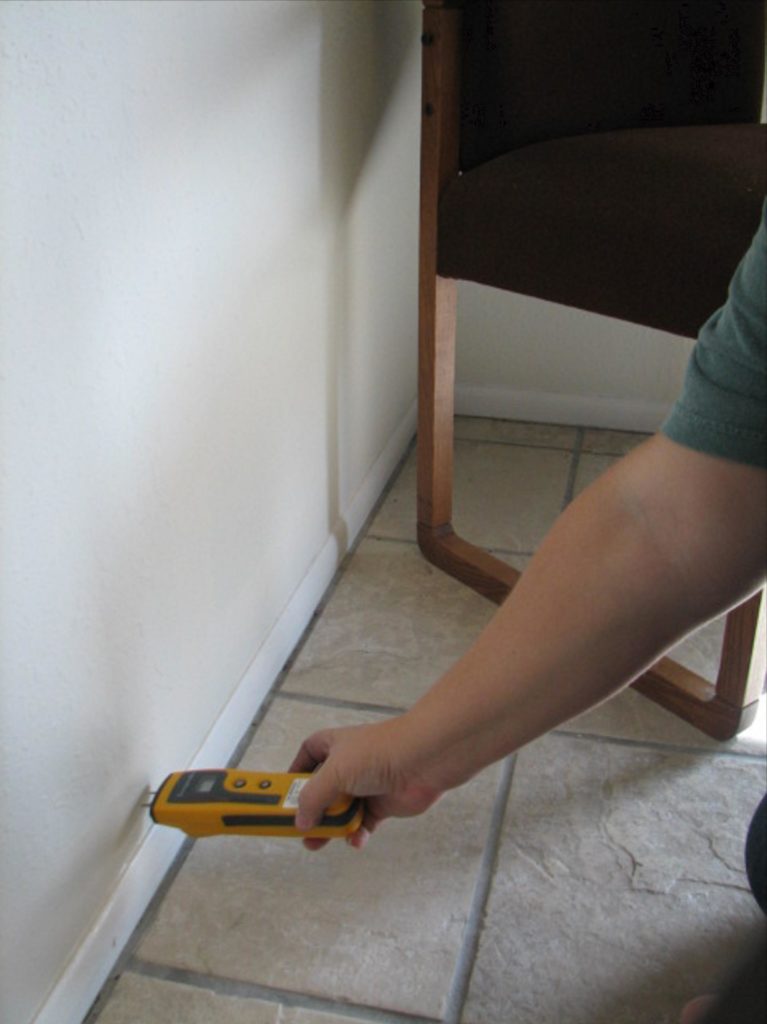In our first blog article on mold, we explored Mold Myths. In the next one, we provided a general description of Mold Assessments. Now, we will take those Assessments to the next level. That is, we will go into more detail on how ESC interprets information and data. Keep in mind that while these Assessments are based on published scientific literature and guidelines, they remain the professional opinion of Environmental Safety Consultants, Inc. (ESC).
We will address several areas of the Assessment in this article. These include moisture content, inspection findings, on site (in situ) readings, laboratory results on various types of mold samples, and interview information. Keep in mind that the Assessment needs to be conducted by a Florida-licensed Mold-Related Services Assessor (MRSA) not also serving as the Florida-licensed Mold-Related Services Remediator. For a lot of reasons, and certainly if there is a potential for litigation, you may want to make sure the MRSA is also a Certified Industrial Hygienist (CIH, see www.abih.org). You can also find CIHs in the Consultants Directory (www.aiha.org).
 Building Materials
Building Materials
Further details on the moisture content of building materials are provided here. Remember that the thermal imaging camera identifies materials that are cooler, perhaps due to the evaporation of water. A moisture meter then confirms or refutes the presence of water. Either the survey or penetrating mode works for this purpose on these meters.
In the survey mode, readings are taken from the surface of the building material, whereas in the penetrating mode, pin holes or larger holes are made and the readings are taken at a certain depth. The common unit, wood moisture equivalent (WME), provides a standardized way to measure readings. Readings of 16 to 20% WME are considered borderline moist while those exceed-ing 20% WME are usually considered excessively moist. This level of moisture is capable of supporting the growth of mold. Mold could be present in the building material, wall cavity air, etcetera at this level.
Surface Samples
Surface samples are of two basic types – cello-tape or sticky tape samples and swab samples. Both types collect living, dead, and dormant mold. A third party laboratory accredited by the American Industrial Hygiene Association (AIHA) can analyze both types under a microscope. The examination evaluates the sample for the genuses or genera of mold, percent coverage, and growth structures present. ESC usually has the swabs streaked on nutrient agar plates (i.e., Petri dishes) in the laboratory. They are then held under controlled conditions. An evaluation is made for the genuses or genera of mold, percent coverage, and extent of growth (Colony Forming Units or CFUs). Whatever the analysis is, ESC uses internal criteria to determine if significant mold contamination is present.
Spore traps collect living, dead, and dormant mold in the air. Reports include the genera of mold, concentration (counts or spores per cubic meter), and growth structures. ESC typically compares these results to those for two outside air samples collected on different sides of the building. Comparisons of the total concentrations of all mold, concentrations for each genus, and genera indicating wet or damp conditions begin. If several wet or damp indicators are found inside, the concentrations inside are much greater than outside, and if the diversity of the population is different inside, this may indicate unique conditions, and, thus, significant mold contamination.
Nutrient agar plate samples collect living mold spores with a sampling device such as an Anderson 1-stage microbial impaction device. For five to seven days the plate grows under controlled conditions in a laboratory before an evaluation. Comparison to outside plate samples and interpretation is the same as for spore trap samples.
ESC’s Role
ESC then evaluates all results – inspection, interview, in situ readings, and laboratory results to prepare the report. We then interpret laboratory data using six to seven criteria. The laboratory results are only part of the story, though. Equally important are the inspection results, in situ readings, and interview information from the building occupants and owner. The report provides details on the testing, results, conclusions and recommendations. The report may include a Remediation Protocol (a cleanup plan). ESC submits the report to the client and is available for discussion as required.
 So now you have details on Mold Assessments. If you need any more information, Environmental Safety Consultants can assist. Our engineers have the credentials and experience to answer your Mold Assessments questions and steer you in the right direction.
So now you have details on Mold Assessments. If you need any more information, Environmental Safety Consultants can assist. Our engineers have the credentials and experience to answer your Mold Assessments questions and steer you in the right direction.
We are a Florida-licensed Engineering business with three Florida licensed Mold-Related Services Assessors on staff, as well as a Certified Industrial Hygienist (CIH, American Board of Industrial Hygiene, www.abih.org). We are just a telephone call (800-226-1735) or an e-mail away (escinc@verizon.net). Contact us today!